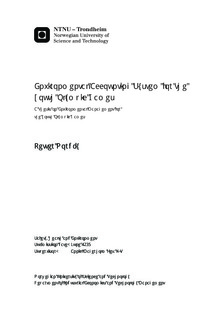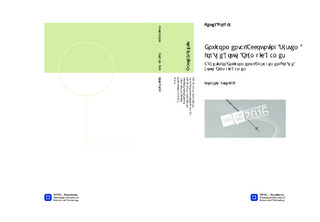| dc.description.abstract | The thesis is written in collaboration with Lillehammer Youth Olympic Games Organising committee (LYOGOC) and their desire to create an environmental strategy for the upcoming Youth Olympic Games (YOG) at Lillehammer in 2016. The thesis focuses on the environmental aspects connected to a youth Olympic game and how to control and handle these in a responsible manner. It was therefore chosen to develop a design for an environmental management system, which is coordinated and combined with an environmental accounting system.The Olympics are regarded as one of the world?s most prestigious sporting events, with history linked back to the ancient Greek society. The modern Olympic debut, with summer disciplines, where held in Athens, Greece, in 1896. The winter games were established twenty-eight years later in 1924, with Chamonix as the first host. The exaggerating development of the Olympic games might have given thoughts of wanting to bring back the true spirit, Olympism and Olympic values. IOC made an effort to get in touch with the old values, which resulted in the concept and establishment of YOG. The vision of YOG builds upon the thought of inspiring young people around the world to participate in sport, and adopt and live by the Olympic values. The event was created to educate, engage and influence young athletes in order to inspire them to play an active role in their communities.The YOG concept is built upon the thought of using former facilities, to set the focus on the third pillar of the Olympic games, the environment. The concept reduces the total environmental impacts of the events and a possibility to educate, develop and form the next generation. This means that the most significant environmental aspects occur during the staging of the event. The thesis intends to visualise a systemic picture of the environmental aspects of the YOG, pointing the attention on procurement, accommodation, venues, transportation, waste management and recycling.The analysis of environmental aspects was performed after creating a systemic picture of the event and interviews with key informants at each site. The analysis gives thereafter a basic in the development of the environmental management system and the environmental accounting system.The environmental management system will be based on the ideas of ISO 14001, ISO 20121 and EMAS. The system uses the high level structure of ISO 14001, with the procedures and measurements reflecting the systemic picture of YOG with the five main focus areas. Each sub element has its own procedures and measurements to control the environmental outcome of the games.The venues and accommodations will be rented in the event period, so it will be harder to affect the total environmental impact, because the willingness to improve environmental performance lies in the hands of the owners, and optional venues are not available. The thesis therefore stresses the importance of extra focus and environmental awareness on procurement, transportation, recycling and communication to increase environmental performance. | nb_NO |

